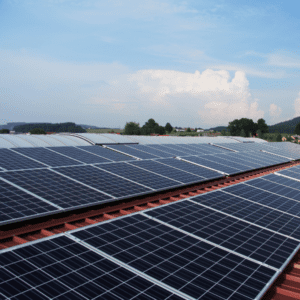Solar Energy: The Powerhouse of Sustainable Future – An In-depth Look into the Unprecedented Growth of Solar Industry

As the global focus intensifies on reducing carbon emissions and securing sustainable energy sources, solar power has risen to be a paramount solution. The evolving affordability and superior efficiency of solar technology have transformed it into a feasible option for individuals, enterprises, and governments worldwide.
The Rise of Solar Power
The International Energy Agency (IEA) affirms solar power as the most rapidly advancing source of renewable energy, with a forecast for global solar energy capacity set to triple by 2027. Solar energy significantly contributed to 46% of the new electric capacity added to the U.S. power grid in 2021, marking the largest share in history, and solar has maintained this record for an impressive nine consecutive years.
This solar surge is propelled by plunging costs, generous government incentives, and escalating awareness of the urgency to transition to clean energy. Let’s delve into the impressive growth of solar energy and the profound implications it holds for our imminent future.
Driving Forces Behind the Solar Revolution
Solar energy is rapidly gaining recognition as a viable source of renewable energy across the globe. The declining costs of solar technology combined with increasing consciousness of the necessity to reduce reliance on fossil fuels render it an appealing choice. Both government entities and private corporations are heavily investing in the advancement of solar energy systems, ranging from extensive solar farms to minor-scale rooftop installations.
Here, we shine a light on the powerful drivers behind this solar revolution:
- Job creation
- Consumer cost
- Equity and accessibility
- Environmental impact
- Reliability and grid integration

1. Job Creation
The installation and maintenance of solar panels and other solar energy systems necessitate a skilled workforce. The demand for solar power is rising, and parallelly the need for workers in the solar industry is expanding. The solar industry already provides livelihoods to approximately 230,000 people in the U.S. Given the level of growth anticipated in the Solar Futures Study, it could potentially add another 500,000 to 1.5 million people to the workforce by 2035.
Employment opportunities in this field span across a wide spectrum, including solar panel installation and sales, engineering, and project management. Furthermore, the expansion of the solar industry indirectly augments job opportunities in other sectors, such as manufacturing and transportation.

2. Consumer Cost
The cost factor is undoubtedly a pivotal driving force for the future of solar energy. According to the Solar Energy Industries Association, “The cost to install solar has plunged by over 60% in the past decade”. This figure pertains to the installation cost of a residential solar system and the cost-per-megawatt-hour for solar energy generation compared to traditional electrical generation.
Additionally, by averting climate damage and enhancing air quality, we can potentially circumvent about $1.7 trillion of future costs.
3. Equity and Accessibility
Solar energy can significantly impact equity by providing broader access to clean and reliable energy. This effect is particularly beneficial to communities worldwide that have traditionally been underserved or marginalized by fossil fuel-based energy systems. The expansion of state-funded community solar programs and innovative strategizing can elevate solar access for everyone.
Solar energy offers numerous benefits that organizations and homeowners across all economic strata can enjoy. Nonetheless, it is crucial to implement policies and regulations that ensure solar energy is accessible and affordable for all communities, rather than being exclusive to those with resources to invest in solar systems.
4. Environmental Impact
Solar energy holds immense potential to curtail our dependence on fossil fuels and mitigate the effects of climate change. Decarbonization, the significant reduction of carbon dioxide emissions, is a key aspect of solar energy.

Does Solar Energy Work At Night?
Does Solar Energy Work At Night? Affordable Solar Services has all the answers to your questions. Check out our blog or give us a call!

How Do Photovoltaic Cells Work?
Find out what makes them so great! Affordable Solar Services has all the answers to your questions. Check out our blog to learn more!


